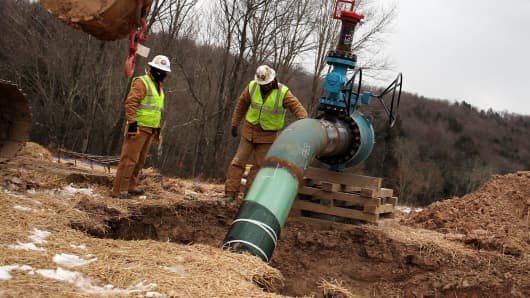Despite slowing growth momentum in China, demand for natural gas is expected to remain robust in Asia and will be enough to absorb the additional supply coming in from North America, several industry players told CNBC on the sidelines of the World Gas Conference in Kuala Lumpur.
Barclays Capital noted last month that the spread between North American natural gas prices and Asian LNG (liquefied natural gas) prices hit all-time highs of more than $13 per million British thermal units to Japan. The widening spread makes it profitable to ship North American cargoes to faster-growing emerging economies here.
Still, many believe too much material is heading in this direction and that the market risks becoming saturated around the next decade. “I think it's pretty realistic because we will see oversupply from 2017, 2018 with the volumes coming from the U.S.,” Fereidun Fesharaki, Chairman and CEO of consultancy FACTS Global Energy said.
However, Santos CEO David Knox and his industry peers believe demand will remain strong enough to absorb the additional volume. “I don't believe there will be an oversupply. I do believe there will be some volumes coming from North America this way but it will be a relatively small amount.”
He added: “We predict that by 2025, there will be 350 million tons of demand in Asia of which perhaps 10 percent will come from North America - so a relatively small amount. We believe that LNG demand is going to remain really very strong in the Asian region for the foreseeable future.”
Asia to Stick to Long-term Deals
And to ensure supply security, industry players say Asia will stay with long-term contracts of between 10 and 20 years, despite calls to evolve the pricing structure towards more flexible shorter terms.
According to Santos Knox an increasing number of shorter-term deals were being struck but they still formed a “relatively small percentage of the total LNG market” at between 10 percent and 20 percent.
“Fundamentally the market is supplied on long-term contracts and the reason is...security of supply,” Knox said.
Fesharaki of FACTS Global Energy agreed that longer-term supply contracts would remain the industry norm, and likened the deals to a lasting nuptial agreement. “Oil is like dating. Gas is like getting married, requiring proper contracts, and long arrangements,” he said.


